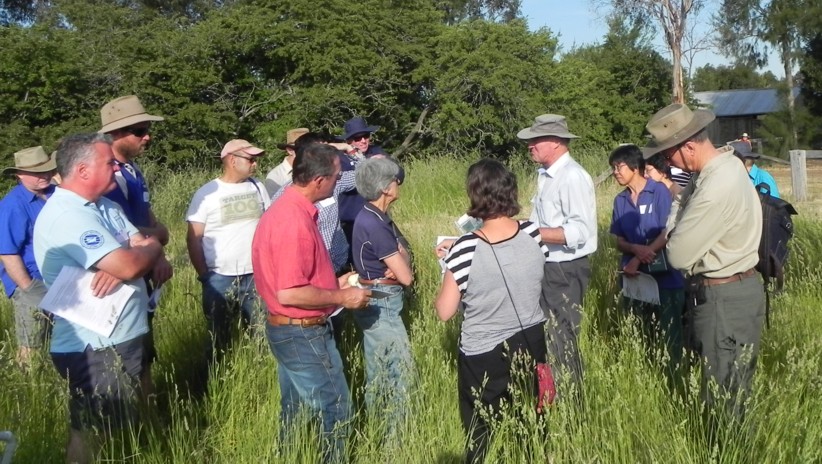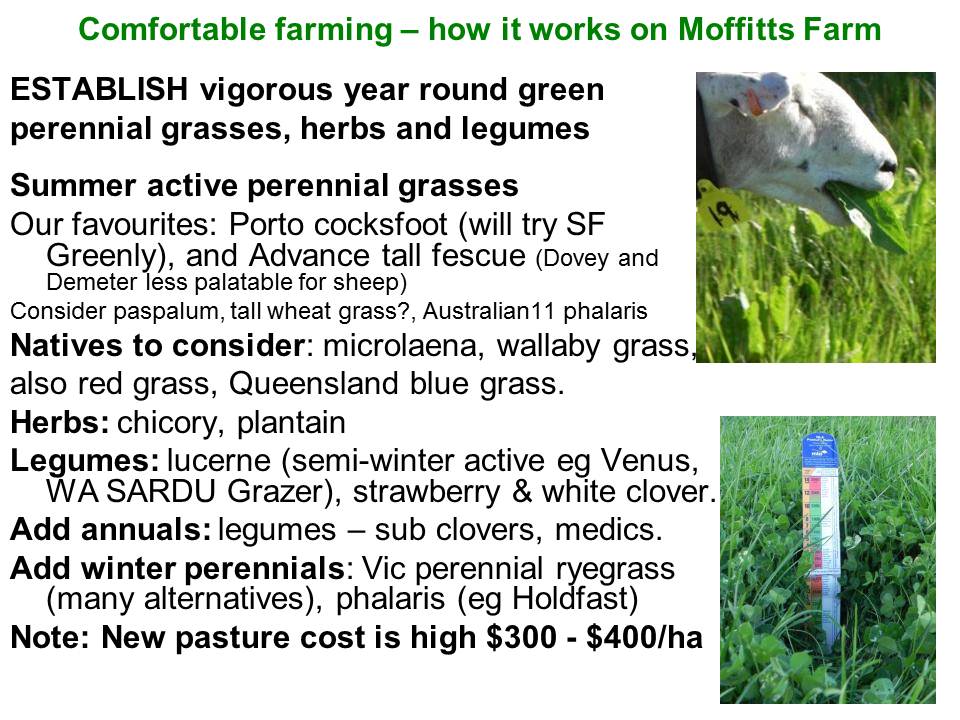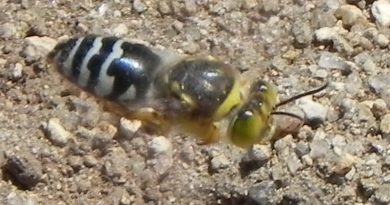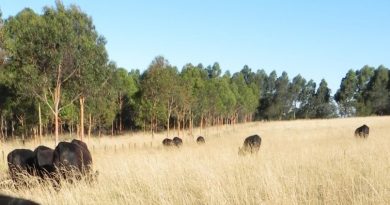Getting started with comfortable farming
By Patrick Francis
After our December 2014 Comfortable Farming presentation and walk in conjunction with Adam Logan from Melbourne Water, a number of participants submitted questions about our system. Here are the questions and my answers.
1. How the family originally began to look after the farm to get the pastures so good for the cattle/sheep in 2014. – how did you begin, as I am starting from ‘scratch’ and my knowledge is minimal? We were involved in the Bushfires in February 2014, and most of our pastures were burnt, some severely.
There is an enormous amount to cover to answer this question because the details around an individual starting out are based around a range of factors associated with each person own pastures, livestock enterprise, objectives for the grazing enterprise, and attitudes towards the balance between environmental integrity and livestock productivity.
Despite this let me answer for a hypothetical small farm (40 ha) which is typical of the Romsey to Wallan district. On this hypothetical farm the existing pastures are dominated by low productivity perennials such as bent grass, sweet vernal, Yorkshire fog, onion grass, and annual grasses such as barley grass and silver grass.
A soil test reveals phosphorus, potassium and trace elements such as copper and molybdenum are deficient, soil pH in water is less than 5.0, and soil organic carbon is less than 3.5%. Ground cover as plant crowns and plant residue is less than 50% in late spring. There are only four stock proof paddocks.
The steps I would take to convert the farm into a moderately productive, low maintenance cost, small grazing enterprise are:
- Correct the soil nutrient levels to above recommended levels for a sheep/cattle grazing enterprise using either organic fertilisers like composted animal manures (will need approximately 2 tonnes/ha or more to start depending on the composition of the manure) or inorganic chemical fertiliser such as super/potash 2 in 1 etc. This should be applied early autumn.
- Add lime to correct pH so that is it is equal to or above 6 in water. Can be applied with the fertiliser early autumn.
- Engage a contractor to sow (direct drilling preferred if paddocks are smooth) a range of winter and summer active species as per figure 1 in mid spring. The same contractor would prepare the paddocks for sowing using an herbicide such as glyphosate about six weeks prior to sowing. Depending on impact on unwanted perennial grasses a second spray prior to sowing may be needed. Weed control is critical for a successful strike of new species. If the owner prefers not to use herbicides, mechanical tillage for weed control is the alternative. Major issue with tillage in spring is the possibility of wet conditions preventing work being done until October or November in this district. Note also tillage reduces soil organic carbon, but it can be returned with prolific pasture growth.
- Engage a fencing contractor to subdivide paddocks into 15 to 20 paddocks so livestock can be rotated at least on a weekly basis, giving each paddock a minimum 8 to 12 weeks rest between grazings.
- Only introduce livestock into the system once all pastures have reached a minimum of 2000 kg dry matter in spring.
- Adjust carrying capacity so that after grazing a paddock for a week, when the stock move to the next paddock there is a minimum of 1500 kg dry matter per hectare left behind.
Remember depending on the condition of soil and pastures when you start, this program will be altered significantly. For instance if productive pasture species are already present in significant numbers – fencing and grazing management may be all that is needed to get started.
Figure 1: Pasture species used on Moffitts Farm
2. Why are steers more suitable for stocking your ‘comfortable management system’ than breeders? Are they are less work (no surveillance necessary for calving)? Is it because you can graze and them harder and move them more easily?
There are a number of reasons for choosing steers over breeding cows for our comfortable farming system. They include:
- We want a low cost grazing business that doesn’t need inputs such as hay or silage (making your own or buying in, then feeding out in autumn and winter); or drenching for internal parasites; or having vet bills with calving problems, hypocalcaemia etc. Steers or heifers can be purchased each year direct from breeders or at saleyards at a time and in numbers which suits the feed conditions and likely seasonal conditions on your farm. If like in 2014 when the BOM forecast in July was a high risk of El Nino conditions, then we would purchase fewer animals, based on the likely feed needed to finish them as bullocks or as feeder steers or heifers to a feedlot after 7 to 8 months. Steers/heifers give you far more control over cost inputs compared to breeding cows which most farmers are not prepared to sell if pasture feed declines below environmentally sustainable level ( 1500 kg dry matter per ha). The consequence of running breeders are usually paddocks being overgrazed particularly in summer damaging the perennial grasses present, and a requirement to feed costly supplements through summer and autumn and possibly winter.
- Analysis of different livestock enterprise profitability in south eastern Australia by Holmes Sackett and the DEPI Monitor Farm Project for the last 15 years has shown a beef cattle trading enterprise is more profitable than a breeding cow enterprise. The main reasons for this are the low variable costs and not having capital tied up in breeding cows. There can be issues with trading especially on small farms. They are sourcing livestock with the temperament you expect for easy management, especially moving animals between paddocks. To overcome this look for a direct purchase arrangement with a local breeder who looks after his/her cattle and ensures they have a quiet temperament. The other issue is selling animals cost effectively. Agents fees and transport costs can remove around 10% of the value of live weight gain achieved. The other key factor is being able to buy the animals at a time when demand is less e.g. in winter compared with spring. Having a pasture feed bank in the paddock helps with achieving this as in the comfortable farming system many paddocks are ungrazed between February and June because the steers/heifers have been sold. This four month break (not available in breeding cow operations) allows pastures to grow significantly putting you in an ideal position to buy again before others in the district are looking for more animals.
The question asked about grazing steers “harder” is important to answer. In the holistic grazing system we use, all grazing pressure is the same, that is, it is irrespective of the class of animals. The pasture bank created before grazing is consumed evenly with any class of livestock by ensuring the grazing pressure is suitable, and is maintained for a short period of time which ensures pasture plant integrity and resilience to the prevailing rainfall is maintained. So there is never any intention to graze particular types of animals “harder” as in conventional management that implies grazing with less feed available for the animals to eat, that is, less than around 1000 kg dry matter per hectare. Doing this weakens pasture plant vitality, exposes more bare soil to erosion and annual weed occupation, and predisposes animals to greater intestinal infective larvae intake. In our Comfortable Farming system the grazing pressure is adjusted based on the class of stock and feed available. We generally graze pastures at 50 – 100 dry sheep equivalents per hectare for four to 10 days. How long depends on the opening pasture stock which varies between 3000 kg dry matter per hectare and 5000 kg dry matter per hectare, and our closing pasture stock which must be above 1500 kg dry matter per ha.




